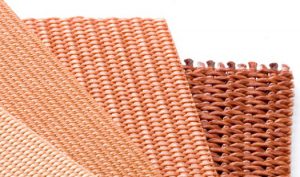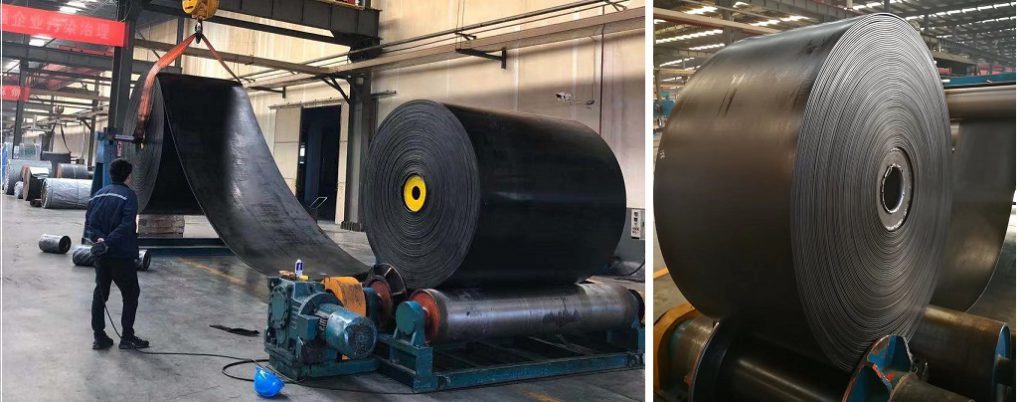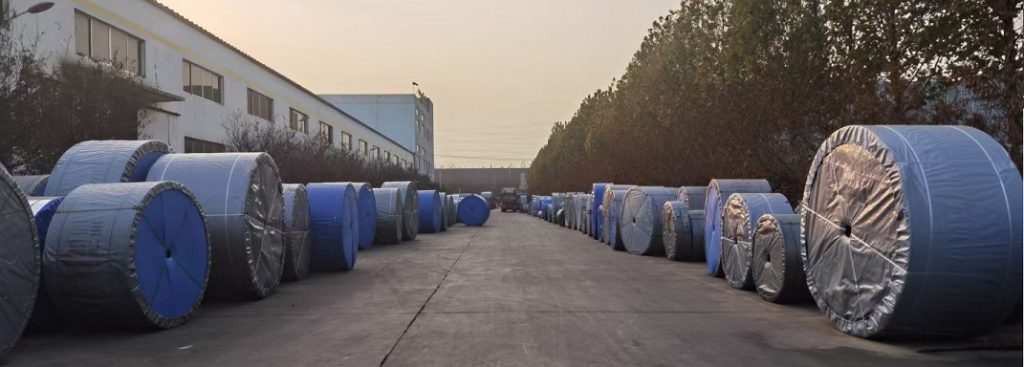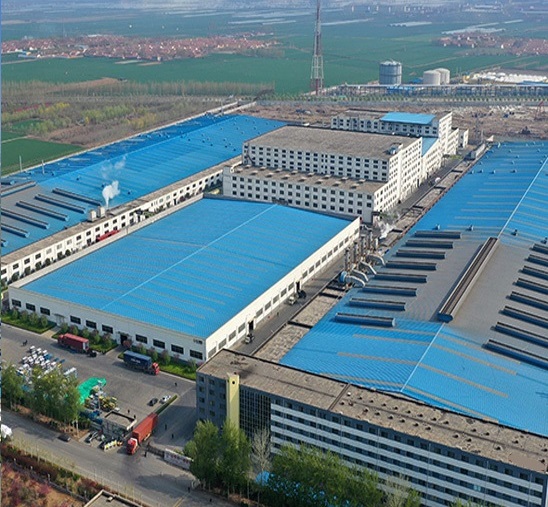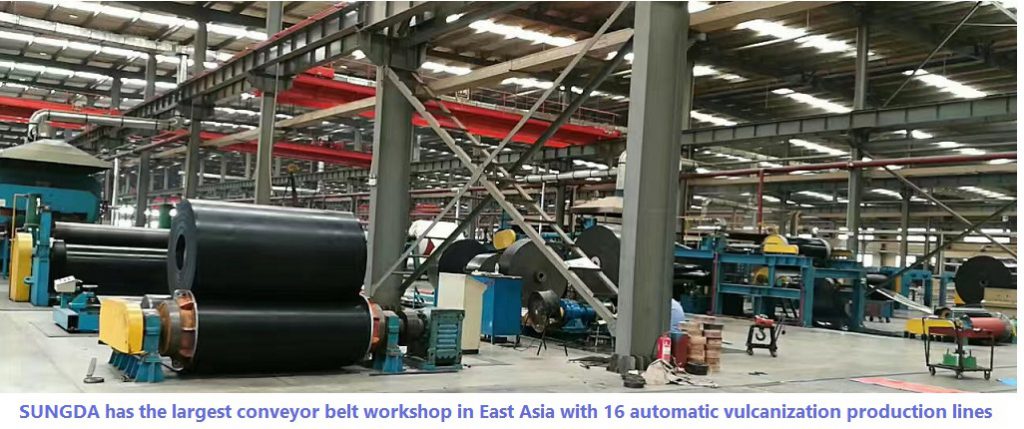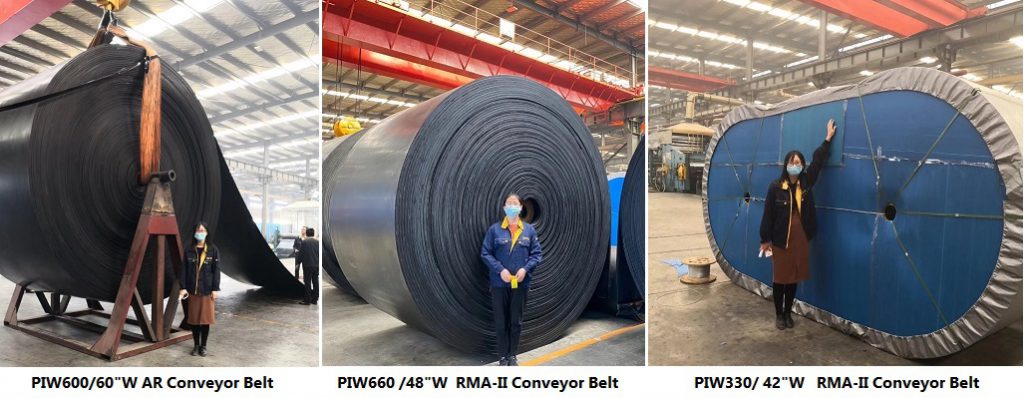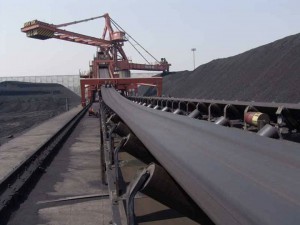Coding rule of fabric material used by rubber conveyor belt
Rubber conveyor belt’s fabric layers are sandwiched between skim rubber coats for adhesion and loading support, the top and bottom rubber cover are added for protection of belt carcass, so fabric carcass played a very important role in all kind of conveyor belt, such as EP fabric conveyor belt, heat resistant conveyor belt, Nylon(NN) conveyor belt, and abrasion conveyor belt, etc.
1. There are different naming ways for dipped fabric material used by rubber conveyor belt in different countries, and the following table lists names commonly used by some countries.
| International code | British code | Japan/US | Warp/weft |
Material |
|
B |
C | Warp/weft |
Cotton |
|
| R | – | Warp/weft |
High-strength viscose |
|
|
Pb |
CN | Warp/weft |
Brocade/cotton (twisted together) |
|
|
EbPb |
CT/CN |
warp |
Polyester/cotton Labelling mode commonly used by whole core belting | |
|
Weft |
Chinlon/cotton |
|||
|
EE |
TT | PP | Warp/weft |
Polyester |
|
PP |
NN | NN | Warp/weft |
Chinlon |
|
EP |
TN | PN | Warp |
Polyester |
|
Weft |
Chinlon |
|||
|
DP |
DN | Warp |
Aramid fiber |
|
|
Weft |
Chinlon |
|||
|
DbPb |
– | Warp |
Aramid fiber /cotton |
|
|
Weft |
Chinlon /cotton |
|||
|
EPbPb |
– |
Warp |
Polyester, chinlon/cotton
|
|
|
Weft |
Chinlon/cotton
|
|||
|
EpP |
– |
SW |
Warp |
Polyester+Chinlon (mainly applied to straightwarp and weft)
|
|
Weft |
Chinlon
|
|||
|
St |
St | Warp |
Steel wire(no weft) |
|
Naming modes of Europe usually comply with international standards, but the Chinese naming system of dipped fabric materials has mixed different systems from Japan/US and Europe. Moreover, in the Former Soviet Union, chinlon 6 was called Kapron, so they get used to using TK to express EP fabric material which is used on EP conveyor belt and heat resistant conveyor belt.
2. Types of fabric material structure commonly used by rubber conveyor belt:
Double-warp and single-weft: it’s a deformative texture of plain-weaving structure featured by 2 parallel warp yarns and one interwoven weft yarn, and in this way, interweaving points in the fabric are reduced, and this structure is applicable to the canvas with high warp and weft density. The strength utilization ratio of the canvas is improved by reducing warp and weft interweaving points. This kind of structure is called OXFORD abroad.
2/2 broken twill: this structure, also aiming at reducing interweaving points between warp and weft, is applied to heavy canvas. Compared with plain-woven fabric, the utilization ratio of its strength is higher, especially the canvas’s strength against longitudinal tearing is high, so it is applicable to the rubber conveyor belt of belt jointed mechanically. This structure is called CFW (CROW’S FOOT WEAVE) abroad.
At present, fabric materials used by rubber conveyor belt are mainly steel wire, polyester, and chinlon (mainly chinlon 66) and also extend towards composite materials, and aramid fiber has been increasingly used. Rubber conveyor belt using synthetic fibers and steel wire ropes as fabric materials in China occupy 80% of the total quantity of conveyor belts. In developed countries and regions like Europe and America, aramid fibers have been commonly used in rubber products, but China has not applied it on a large scale yet. It’s found through performance comparison that aramid fiber is the ideal fabric material for rubber conveyor belts. The future development direction of fiber fabric materials used by conveyor belts is to modify existing fiber materials, develop new-type synthetic fibers and apply all kinds of high-performance fibers.
